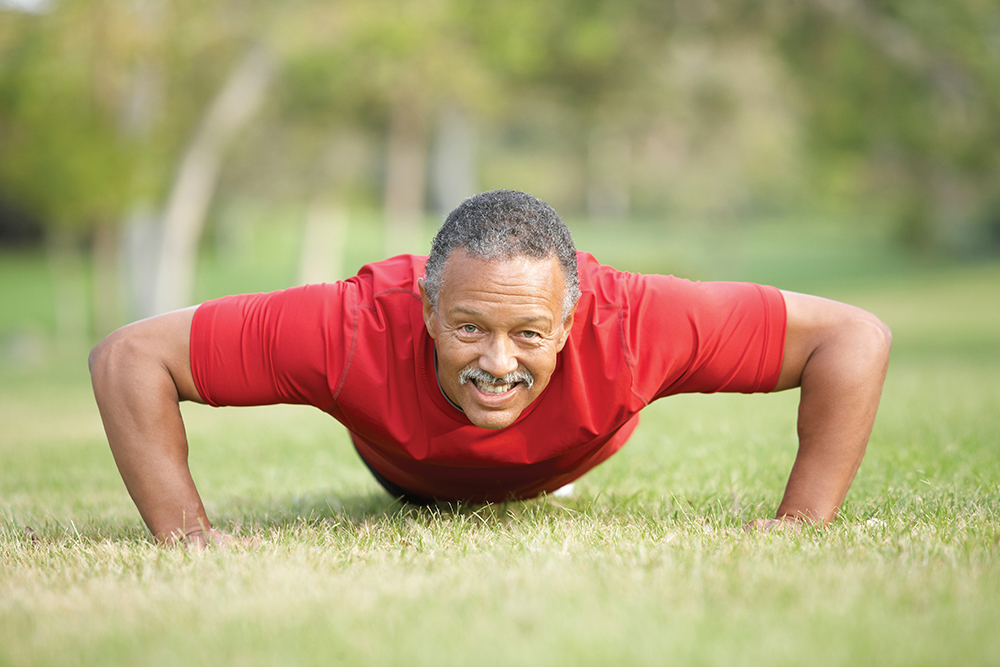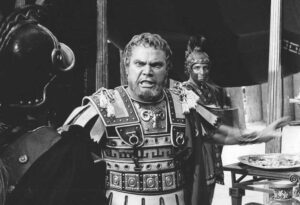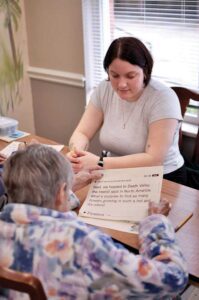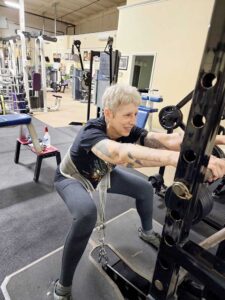Submitted by Villas of Holly Brook
As you grow older, you go through many changes, and you may need to adjust your lifestyle for healthy aging. Physical activity is good for your health at every age. Most people tend to focus on one type of exercise or activity and think they’re doing enough. Research has shown that it’s important to get all four types of exercise: endurance, strength, balance, and flexibility. Each one has different benefits. Doing one kind also can improve your ability to do the others, and variety helps reduce boredom and risk of injury.
Endurance
Endurance activities, often referred to as aerobic, increase your breathing and heart rates. These activities help keep you healthy, improve your fitness, and help you perform the tasks you need to do every day. Endurance exercises improve the health of your heart, lungs, and circulatory system. They also can delay or prevent many diseases that are common in older adults such as diabetes, colon and breast cancers, heart disease, and others. Physical activities that build endurance include:
- Brisk walking
- Yard work (mowing, raking)
- Dancing
- Swimming
- Biking
- Climbing stairs or hills
Increase your endurance or “staying power” to help keep up with your grandchildren during a trip to the park, dance to your favorite songs at a family wedding, and rake the yard and bag up leaves. Build up to at least 150 minutes of activity a week that makes you breathe hard. Try to be active throughout your day to reach this goal and avoid sitting for long periods of time.
Strength
Your muscular strength can make a big difference. Strong muscles help you stay independent and make everyday activities feel easier, like getting up from a chair, climbing stairs, and carrying groceries. Keeping your muscles strong can help with your balance and prevent falls and fall-related injuries. You are less likely to fall when your leg and hip muscles are strong. Some people call using weight to improve your muscle strength “strength training” or “resistance training.”
Some people choose to use weights to help improve their strength. If you do, start by using light weights at first, then gradually add more. Other people use resistance bands, stretchy elastic bands that come in varying strengths. If you are a beginner, try exercising without the band or use a light band until you are comfortable. Add a band or move on to a stronger band (or more weight) when you can do two sets of 10 to 15 repetitions easily. Try to do strength exercises for all of your major muscle groups at least 2 days per week, but don’t exercise the same muscle group on any 2 days in a row.
Balance
Balance exercises help prevent falls, a common problem in older adults that can have serious consequences. Many lower-body strength exercises also will improve your balance. Balance exercises include:
- Tai Chi, a “moving meditation” that involves shifting the body slowly, gently, and precisely, while breathing deeply
- Standing on one foot
- The heel-to-toe walk
- The balance walk
- Standing from a seated position
Flexibility
Stretching can improve your flexibility. Moving more freely will make it easier for you to reach down to tie your shoes or look over your shoulder when you back your car out of the driveway.
Safety tips
- Stretch when your muscles are warmed up
- Stretch after endurance or strength exercises
- Don’t stretch so far that it hurts
- Always remember to breathe normally while holding a stretch
- Talk with your doctor if you are unsure about a particular exercise
When Should I Ask My Health Care Professional About Being Active?
According to the latest research, healthy older adults who plan to increase physical activity a little at a time generally do not need to talk with a health care professional beforehand. However, your health care professional might be able to give you information on types of activities to consider and how to progress at a safe and steady pace.
Do check with your health care professional:
- If you are already being treated for a chronic condition, such as type 2 diabetes, heart disease, osteoarthritis, high blood pressure, a physical disability, or are a cancer survivor.
- If you have chest pain or pressure, dizziness, or joint pain.
- If you want tips to avoid getting hurt.
- If you develop new health concerns when increasing your activity level.
Your health care professional may recommend and help you plan for the types and amounts of physical activity that will suit you.
How Can I Start or Keep up an Activity Program That Works for Me?
You can start slowly and increase your goals as you build your endurance and strength over time. For example, you can do arm and leg exercises without weights to get started. As you progress, you can add hand-held weights, like soup cans, to improve your strength.
- Pick an activity you enjoy and start with small goals, such as “I will take three 10-minute walks this week.”
- “Start low and go slow.” Slowly increase the total amount of time you are active, the number of days you are active, and the intensity of each activity.
- If you live in an assisted-living or retirement facility, ask if the fitness center offers a free health checkup and fitness program.
- Start a walking or other activity group with friends or family members where you live, work, or worship.Remember To Follow These Safety Tips
- Ask your health care professional about how you can safely increase your physical activity.
- Remember to start slowly and build up to more intense activity over time.
- Wear a sturdy pair of shoes.
- Stop exercising if you have pain, become dizzy, or feel short of breath.
- Drink fluids.
- Do outdoor exercise during daylight hours with a buddy. Be alert when crossing the street.
As you become more fit, try to slowly increase your pace, the length of time you are active, and how many days of the week you are active. No matter your age, you can find activities that meet your fitness level and needs!
Villas of Holly Brook offers Fitness, Strength, and Balance Activities to help you stay physically active. Check out the Villas of Holly Brook and Reflections Memory Care website at www.villasofhollybrook.com. We have communities in Morton, Pekin, Washington, Bellevue, and East Peoria. Call the executive director at one of these communities for a personal tour.
Source: NIH: National Institute on Aging
For additional informative and inspirational articles, visit 50 Plus News and Views Greater Peoria Area online edition today!










